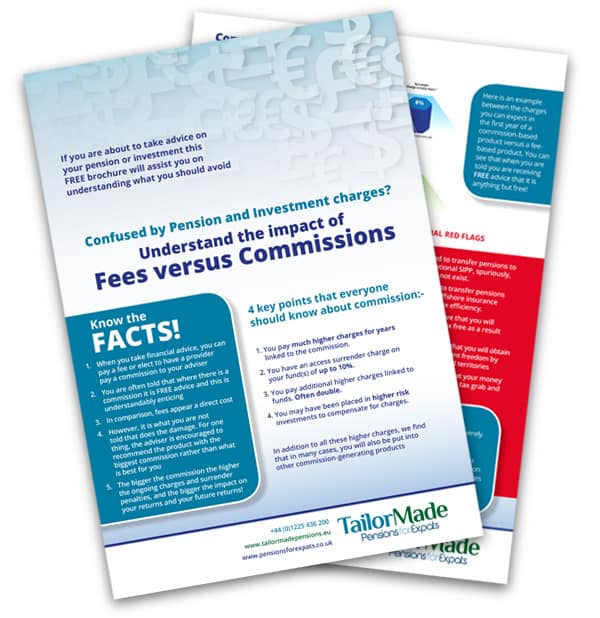Expat Returns -LTA
The Lifetime Allowance ( LTA )
Many expats were encouraged to transfer their pensions because of this LTA. This was only likely to be good advice is there was a real and present danger of the expat’s pension exceeding the LTA. In practice, many will have transferred for this reason but the would never have been an issue as the funds would not get close to the LTA.
What about those for whom the Lifetime Allowance ( LTA ) is a real issue?
Welcome to the Lifetime allowance enhancement factor.The purpose of the Recognised Overseas Scheme Transfer Factor as set out in here Protection tax charge
It is to prevent the same pension money being tested twice for LTA purposes. At its simplest, see below an example of how we see the Transfer Factor works: –
Lifetime allowance enhancement factor
The non-resident individual’s lifetime allowance enhancement factor is available to individuals who after 5th April 2006 have been a ‘relevant overseas individual’ at any point in an ‘active membership period’ of a registered pension scheme.
An individual will be a relevant overseas individual for a tax year if they:
- — are not a relevant UK individual; or
- — are a relevant UK individual, but
- — are only a relevant UK individual by virtue of the fact that they were UK resident at some point during the previous five tax years and when they became a member; and
- — they are not employed by a UK tax resident employer during that tax year.
An individual’s active membership period of a scheme is the period between:
- — the later of 6th April 2006 and first accruing benefits in the scheme; and
- — the earlier of immediately before the first benefit crystallisation event and the individual ceasing to accrue benefits under the scheme.
Recognised overseas scheme transfer factor- Lifetime Allowance
The individual’s non-residence factor is calculated in accordance with Sections 222 and 223 of the Act. The exact form of the calculation depends on the type of scheme (defined benefit, etc) of which the individual is a member.
The transfer factor is the value of the assets transferred, less the relevant relievable amount, divided by the standard lifetime allowance as at the date of the transfer. The relevant relievable amount is broadly that portion of the transfer that has not benefited from UK tax relief after 5th April 2006, and is calculated in accordance with Sections 225 and 226 of the Act. It is calculated in respect of the period in which the member was not a ‘relevant overseas individual’ but which was part of the ‘overseas arrangement active membership period’.
Transfers from an overseas pension scheme to a registered pension scheme
When a transfer payment is made from an overseas scheme (that is not a registered pension scheme) to a registered pension scheme, it will not count as a contribution to the registered pension scheme for tax purposes.
Individuals who wish to take advantage of either the recognised overseas scheme transfer factor or the non-resident individual’s lifetime allowance enhancement factor must notify HMRC within prescribed time limits.
The transfer will not be an unauthorised payment, nor will it constitute a benefit crystallisation event. Consequently, when the member later takes benefits relating to the transfer from the registered pension scheme they will need to be tested against the member’s lifetime allowance.
Example
In 2016/17 Lucy transfers £1,000,000 from her UK SIPP to a QROPS. Under BCE8 this will use 100% of her LTA. If in 2017/18 she decides to transfer that £1,000,000 back from her QROPS to a UK SIPP, she could apply to HMRC for a Recognised Overseas Scheme Transfer Factor (ROSTF). This is calculated by dividing the amount of any sums and assets transferred by the standard lifetime allowance as at the date of the transfer. If in this year the LTA is still £1,000,000 the ROSTF would be calculated as £1,000,000 / £1,000,000 = 1.
Her enhanced LTA would be the standard LTA multiplied by a factor of 2 (1+1).
If later in the same year she decides to take all of her benefits from her new SIPP then her enhanced LTA would be £2,000,000. She has already used 100% of the standard LTA under BCE8 (£1,000,000), which would leave £1,000,000 of enhanced LTA to be used under the new BCE. This means that the QROPS transfer value is covered by the transfer factor, thus preventing the transfer being subject to an LTA charge.
Summary
This blog should not be seen as advice and tax advice would be needed should an expat return to the UK apply for this LTA enhancement factor. Once back in the UK, the pension comes under HMRC tax rules for UK tax residents.
Nevertheless, many returning expats with a pension in a QROPS should seriously consider bringing the pension back to the UK for the advantages listed in this blog and a previous one Returning to the UK .
The views expressed in this article are not to be construed as personal advice. You should contact a qualified and ideally regulated adviser in order to obtain up to date personal advice with regard to your own personal circumstances. If you do not then you are acting under your own authority and deemed “execution only”. The author does not except any liability for people acting without personalised advice, who base a decision on views expressed in this generic article. Where this article is dated then it is based on legislation as of the date. Legislation changes but articles are rarely updated, although sometimes a new article is written; so, please check for later articles or changes in legislation on official government websites, as this article should not be relied on in isolation.
Related Stories:
- QROPS and the International Enhancement Factor
- QROPS and the Lifetime Allowance
- Lifetime Allowance 5 Key Facts
- UK pension- are you outside the UK?
- Pension lifetime allowance
Share this story




